Adenomyosis is a condition where the inner lining of the uterus (endometrium) breaks through the muscle wall of the uterus (myometrium). This can cause severe menstrual pain, heavy bleeding, and enlarged uterus. Let’s explore how Ayurveda can help! 👩⚕️
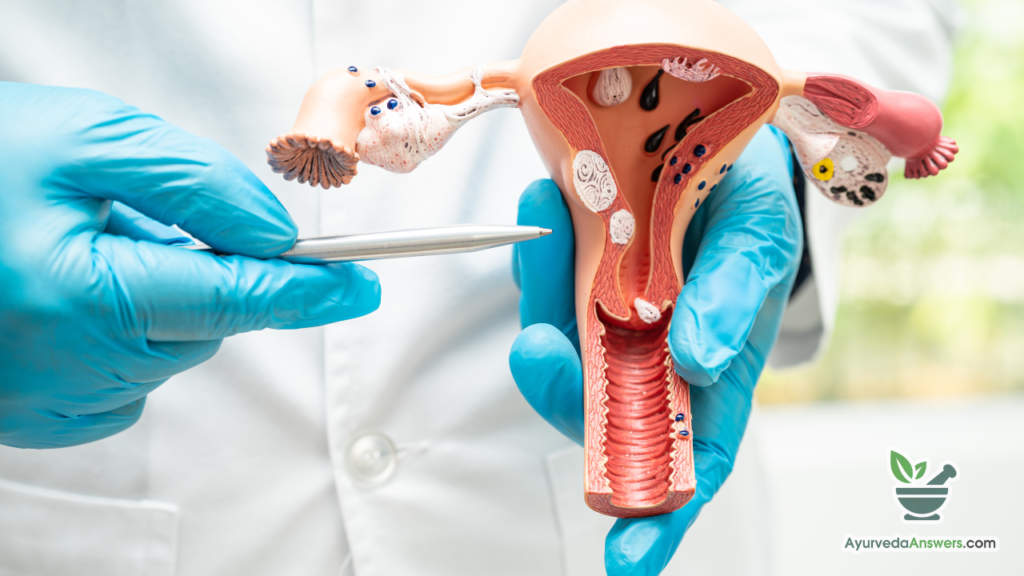
What is Adenomyosis?
Adenomyosis happens when endometrial tissue that normally lines the uterus starts to grow into the muscular wall of the uterus.
This tissue continues to act normally – thickening, breaking down, and bleeding – during each menstrual cycle. However, the displaced tissue has no way to exit the body. This causes inflammation, pain, and abnormal bleeding. 😣
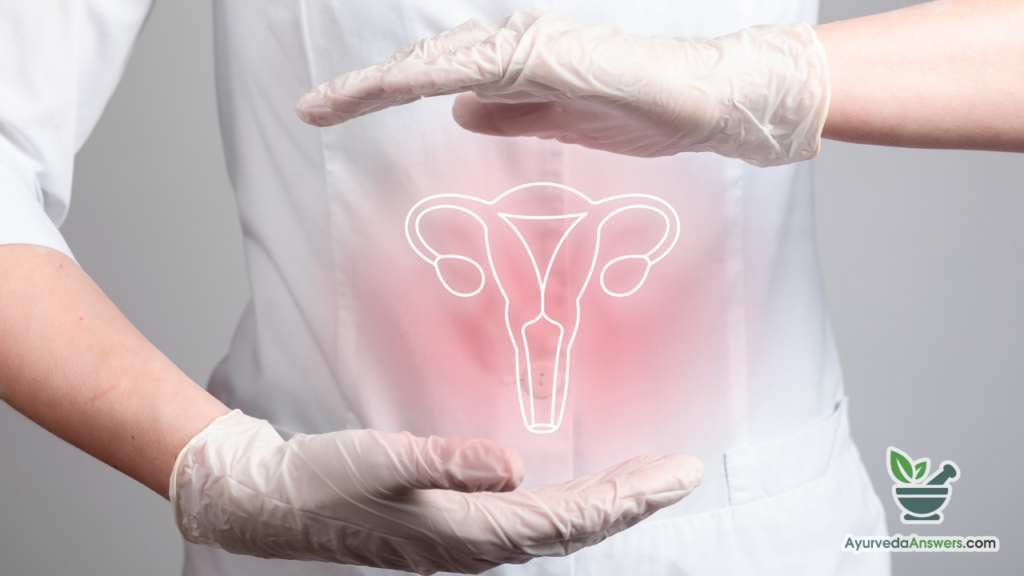
In Ayurveda, adenomyosis falls under the categories of yonivyapad (uterine disorders) or asrigdara (excessive uterine bleeding). The main doshas involved are vata and kapha.
Aggravated vata pushes pitta out of balance, leading to abnormal growths. Excess kapha also obstructs the channels and causes stagnation. Balancing these doshas is key to treatment. 👍
Causes and Risk Factors

Ayurveda believes adenomyosis is caused by a range of factors:
- Vata aggravation from stress, excessive travel, straining, etc.
- Weakness of female reproductive tissues (artava dhatu)
- Congestion and blockages from excess kapha
- Poor nutrition and lifestyle habits
- Genetic predisposition (beej dosha)
- Uterine injury from surgery, infection or trauma
Biomedicine has identified similar risk factors like genetics, uterine damage, and hormonal influences. Let’s see how we can avoid these risks through Ayurvedic wisdom! 💡
Prevention and Early Intervention
Prevention is ideal, but identifying adenomyosis early can help control progression. Here are some tips:
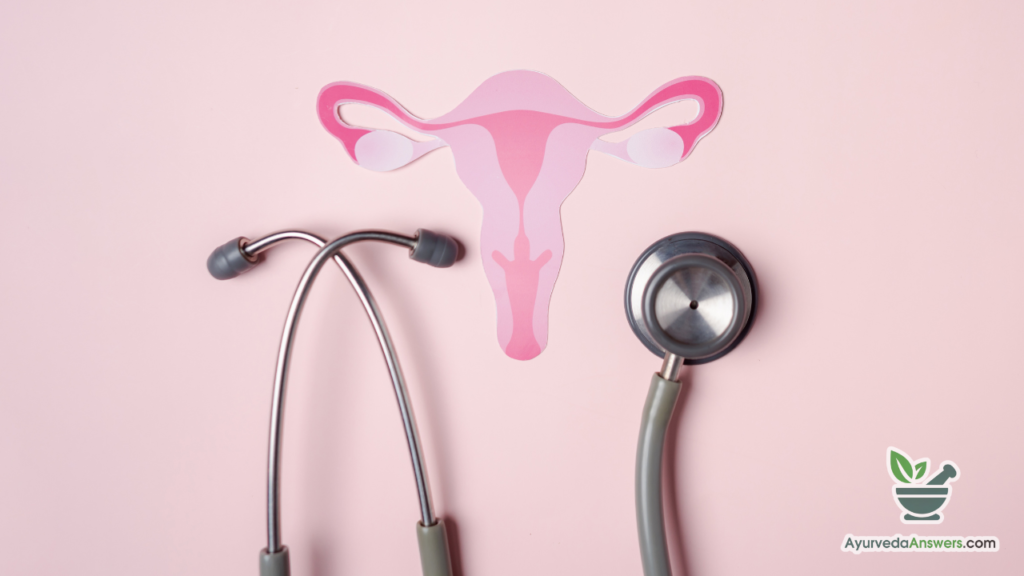
- Maintain a vata-pacifying lifestyle and diet. Emphasize warm, moist, fresh, natural foods. Avoid excess stress. 🍵
- Practice yoga and meditation regularly to calm vata and strengthen tissues. 🧘♀️
- Receive abhyanga (warm oil massage) before bathing. This deeply pacifies vata. 💆♀️
- Ensure proper elimination and detoxification through activities like nasya (nasal oil therapy). 👃
- Take rasayanas (rejuvenatives) like Ashwagandha to nourish female reproductive tissues. 💊
- Treat any uterine issues immediately and avoid reoccurrence.
- Watch for early signs like heavy, painful periods and pelvic discomfort. Seek Ayurvedic guidance right away. ✋
Ayurvedic Treatment Approach
The main aims of Ayurvedic treatment are:

- Alleviate pain and excessive bleeding
- Regulate menstruation
- Promote tissue healing
- Prevent progression of disease
- Restore uterine health ✅
This involves a holistic protocol to balance doshas, nourish tissues, remove blockages and strengthen the system.
Key therapies include:

- Vata-pacifying diet and lifestyle adjustments
- Herbs like Ashoka, Lodhra, Dashamoola for the uterus
- Yoga asanas like Supta Baddha Konasana and Setu Bandhasana
- Abhyanga and castor oil packs on the abdomen
- Uttar basti herbal enemas for the uterus
- Virechana (therapeutic purgation) to eliminate excess pitta and kapha
- Ayurvedic detoxification through Panchakarma treatments
With this integrative approach, most women see relief from symptoms and avoid further complications. Some even report reduced size of uterine lesions. 🙌
Dietary Recommendations

Food choices are vital in balancing doshas for adenomyosis. Here are some key diet tips:
✅ Emphasize warm, unctuous, easy-to-digest meals. Favor dairy, wheat, rice, cooked vegetables.
✅ Avoid cold, dry, rough foods that aggravate vata – like salads, juices, raw veggies, beans.
✅ Reduce pungent, acidic and fermented foods to calm pitta.
✅ Minimize heavy, dense, oily foods that increase kapha.
✅ Eat fresh ginger before meals to improve digestion.
✅ Stay hydrated with warm liquids like ginger tea, cinnamon milk, etc.
✅ Reduce caffeine, alcohol, artificial additives.
✅ Take Dashamoola, Manjistha, or Ashoka powder with meals.
✅ Pomegranate juice aids the female reproductive system.
Following these guidelines nourishes the uterus, balances doshas and supports healing from within! 💕
Key herbs used in Ayurveda to treat adenomyosis
Ashoka (Saraca asoca)
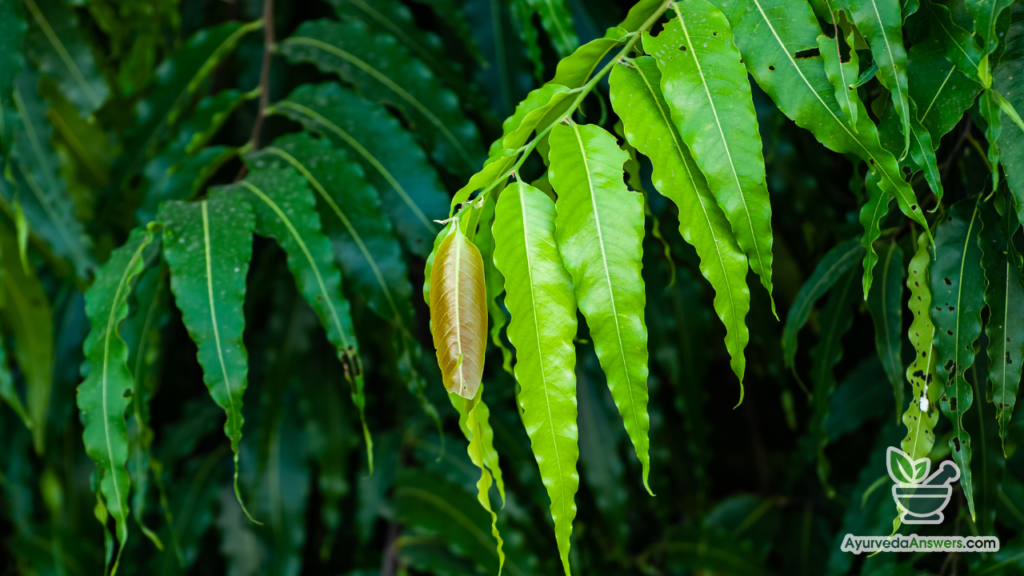
- Ashoka is the premier uterine tonic and astringent herb. It has progesterone-like effects on the endometrium.
- It reduces heavy bleeding by contracting the uterine muscles and blood vessels.
- Ashoka also alleviates pain and inflammation in the pelvis due to its anti-inflammatory properties.
- The bark contains healing compounds like ketosterol and estrogenic substances that nourish and restore the endometrium.
- Regular use of Ashoka bark powder can help normalize menstrual cycles, reduce clotting, treat dysmenorrhea and heal the uterine lining over time.
Lodhra (Symplocos racemosa)

- Lodhra works as an astringent herb to firm and tone the uterine muscles and tissue.
- It contains tannins and flavonoids that provide antioxidant and hormonal balancing effects.
- Lodhra bark powder reduces excessive menstrual bleeding by contracting the uterine arteries and muscles.
- It also has anti-inflammatory and antimicrobial properties to prevent uterine infection.
- Using Lodhra together with Ashoka gives a synergistic effect for adenomyosis treatment.
Shatavari (Asparagus racemosus)
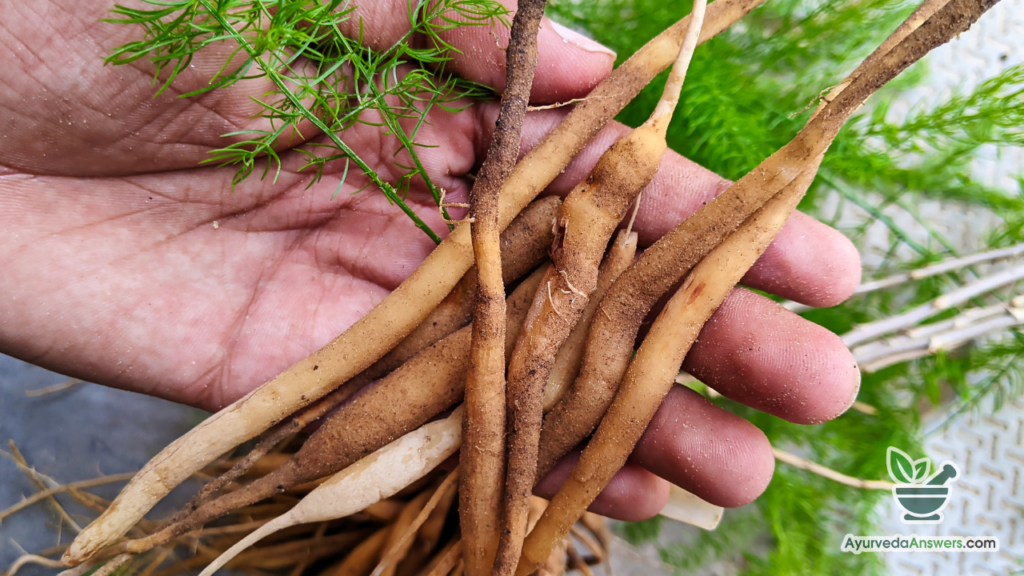
- Shatavari is the prime Ayurvedic rejuvenative for the female reproductive system.
- It nourishes and heals the endometrial tissue, improves estrogen levels and manages hormonal imbalances.
- The saponins and phytoestrogens in Shatavari soothe irritation and inflammation in the pelvic region.
- Shatavari root powder helps control abnormal uterine bleeding due to its hemostatic properties.
- It also strengthens the uterine muscles to prevent adenomyosis progression.
- Taking Shatavari on a regular basis can improve uterine health and fertility over time.
Manjistha (Rubia cordifolia)

- Manjistha is an excellent blood purifier that flushes out toxins from the uterus and pelvic region.
- It improves blood circulation and lymphatic drainage to remove stagnation and congestion from the pelvis.
- Manjistha’s anti-inflammatory and antioxidant properties relieve irritation and tissue damage in the uterus.
- It helps stop abnormal spotting and regulates the menstrual cycle through hormonal balancing effects.
- Manjistha root powder can be used for a few months to cleanse and regenerate the uterine system.
Using these herbs together in a customized protocol along with proper diet, detoxification, yoga, and Ayurvedic therapies can promote healing of the endometrium, regulate menstruation, reduce pain and inflammation, strengthen the uterine muscles and prevent adenomyosis progression.
In summary, adenomyosis requires an integrative Ayurvedic approach for lasting relief. Focus on pacifying vata, strengthening the uterine tissue, removing blockages and toxicity, and restoring the female reproductive system to full health. With wise dietary and lifestyle choices, supportive herbs, and cleansing therapies – the uterus can reclaim its vitality! 💗
Let Ayurveda gently guide you back to harmony. Here’s to renewed uterine health! 🙏
Disclaimer : The techniques described in these articles are not intended as substitutes for professional medical advice or treatment. Consult a physician before trying any new health treatment. Do not stop or change prescribed medications without consulting your healthcare provider. The information provided is for educational purposes only. Results will vary based on individual factors. Always rely on the guidance of a qualified medical professional for any health concerns.
Read Our latest Articles :
- Ayurveda for Disc Bulge: Finding Relief Naturally
- Ayurveda for Alopecia Areata: Nurturing Hair Health Naturally
- Ayurveda for Asthma: Breathe Easy with Natural Solutions
- Ayurveda for Melasma: Embracing Natural Solutions for Clear, Radiant Skin
- Ayurveda for Dampness in the Body: Embracing Balance and Vitality
Leave a Reply